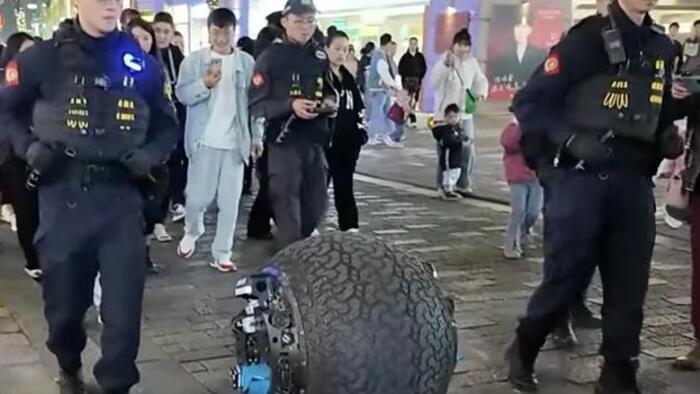In a notable development within law enforcement technology, police in Wenzhou, China, are now testing an innovative spherical robot designed to aid in identifying and chasing suspects. This robot, distinguished by its ball-shaped design, incorporates advanced features such as high-resolution cameras, flashing lights, and a self-stabilizing mechanism that allows it to navigate diverse environments seamlessly. According to reports from the South China Morning Post, this 125kg robot, developed by the College of Control Science and Engineering at Zhejiang University, is engineered to operate efficiently in hostile settings, rendering it an invaluable asset to law enforcement agencies.
The capabilities of this spherical robot are particularly impressive, as it can accelerate to a speed of 35 km/h in just 2.5 seconds. Associate Professor Wang You, who is involved in the robot’s development, highlighted its resilience and tactical proficiency, asserting that it can endure physical assaults such as being struck or falling over while retaining full functionality. Wang explained that the robot can undertake critical tasks like enemy identification, tracking, and capture through modular modifications tailored to specific operations. By implementing this technology, Wenzhou police aim to enhance their operational efficiency and bolster public safety in challenging scenarios.
Furthermore, the spherical robot’s design effectively addresses several limitations faced by traditional wheeled and legged robotics, particularly in terms of mobility and stability. Equipped with various tools—including tear gas sprayers, net guns, and loudspeakers—this robot can improve the effectiveness of patrols and crisis response initiatives. It operates accurately in crowded areas, demonstrating a significant leap in technology compared to existing assets like drones and robotic dogs, which may struggle in similar environments. As public safety demands increase, this advancement represents a crucial step in modernizing policing strategies.
This initiative falls under China’s broader ambition for technological innovation within its public security framework. In March, the Ministries of Public Security and Industry launched a collaboration encouraging the deployment of robotic technology in various policing applications, spanning patrols, border security, and the collection of evidence. With expectations for future expansion, the showcases of robotic implementations aim to promote the potential of these technologies in enhancing law enforcement capabilities throughout the country. This week’s deployment of robots by Chengdu police further exemplifies their commitment to integrating robotics into everyday policing to deter violence and assist officers in real-time scenarios.
During a recent practical demonstration, a Chengdu police robot was utilized to simulate a confrontation, engaging with potential disturbances by projecting messages to the crowd while simultaneously communicating with human officers. Such applications underscore the multidimensional utility of robotic support in law enforcement, providing a strategic advantage in crowd management and crime prevention. As authorities begin to harness these new tools, the partnership between technology and policing is poised to reshape the landscape of public safety.
However, despite the promising outlook of these advancements, questions regarding the implications of deploying robotic systems in policing systems remain. Issues such as public acceptance, ethical considerations, and the potential for misuse warrant careful examination as such technologies evolve. As China forges ahead with its plans for high-tech policing, striking a balance between innovation and the protection of civil liberties will be paramount to ensure these advancements contribute positively to society.

